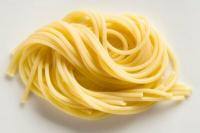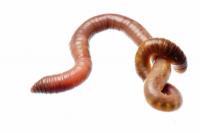Fighting box disease successfully
The box is an evergreen and relatively robust deciduous wood. Although the boxwood is very robust, it is also very susceptible to various pests and diseases. At the first sign of illness in the book, you should act as soon as possible.
Worth knowing about the book
Many of the book's illnesses can be traced back to improper care or unsuitable location.
- The box should always be planted in partially shaded locations. Especially in winter it would be very susceptible to frost damage in the blazing sun.
- In spring and summer in particular, the beech tree is often damaged or lost by various insect pests. But not only the pests can affect the book, also various fungi can cause diseases and in the worst case lead to the loss of the book.
Diseases and pest infestation and their control
- The sucking and biting pests on the book include z. B. the boxwood gnat and the boxwood flea. The boxwood gall mosquito forms blister-like, yellowish to orange-colored leaf galls in the leaf tissue. The boxwood flea causes deformations of the leaves, especially at the tips of the shoots.
- You should remove the infected parts of the plant and dispose of them with household waste, under no circumstances on the compost give. You can treat the affected box in both cases with an anti-sucking agent insects, e.g. B. Danadim Progress, Mospilan or Karate Zeon.
- Other diseases are caused by the spider mite species Eurytetranychus buxi, especially on the boxwood species Buxus sempervirens and Buxus microphylla. Here there is an infestation of whitish yellow spots on the leaves. These spider mite eggs, which overwinter on the plant, can be combated with agents containing rapeseed oil and mineral oil. This can be followed by a treatment with the above-mentioned agents against sucking insects.
- Another pest that causes diseases of the beech is the box tree moth. its caterpillars, which come from East Asia. These overwinter in a web between the leaves. It is brought in mainly via Holland, with goods from China. You can treat infested plants with agents against free-eating caterpillars, e.g. B. with Karate Zeon, Dipel Xentari, Steward or Neemazal.
- The diseases of the book also include the death of boxwood, caused by the fungus Cylindrocladium buxicola. The leaves are mainly attacked by annual and biennial shoots. An infestation can first be recognized by brown spots on the leaves, black longitudinal stripes on the shoots of the plant and white spore beds on the underside of the leaves.
- Since this fungus can spread very quickly in damp weather, affected parts of the plant should be removed and disposed of as soon as possible. It is important that leaves on the ground are completely removed and disposed of, as the plants could otherwise become infected again through the fungal spores. The scissors should then be disinfected. The new shoots, after about 2 weeks, can then be treated preventively with a fungicide.
- The so-called tree cancer is another disease in the book, caused by the fungus Volutella buxi. You can recognize an infestation by pale yellow spots on the leaves. As the process progresses, the initially green leaves become lighter and lighter and finally dry up. In addition, growths and pink mushroom beds form on the shoots. The control of this fungus is the same as for the Cylindrocladium buxicola fungus.
Boxwood has yellow leaves - causes & measures
If your boxwood has yellow leaves, it is often a lack of water. As well …
No matter what diseases or pests your book is infected with, stick to whatever means you use necessarily want to follow the manufacturer's specifications, as careful handling of these substances is important to prevent the disease respectively. fight the pest as effectively and gently as possible.


